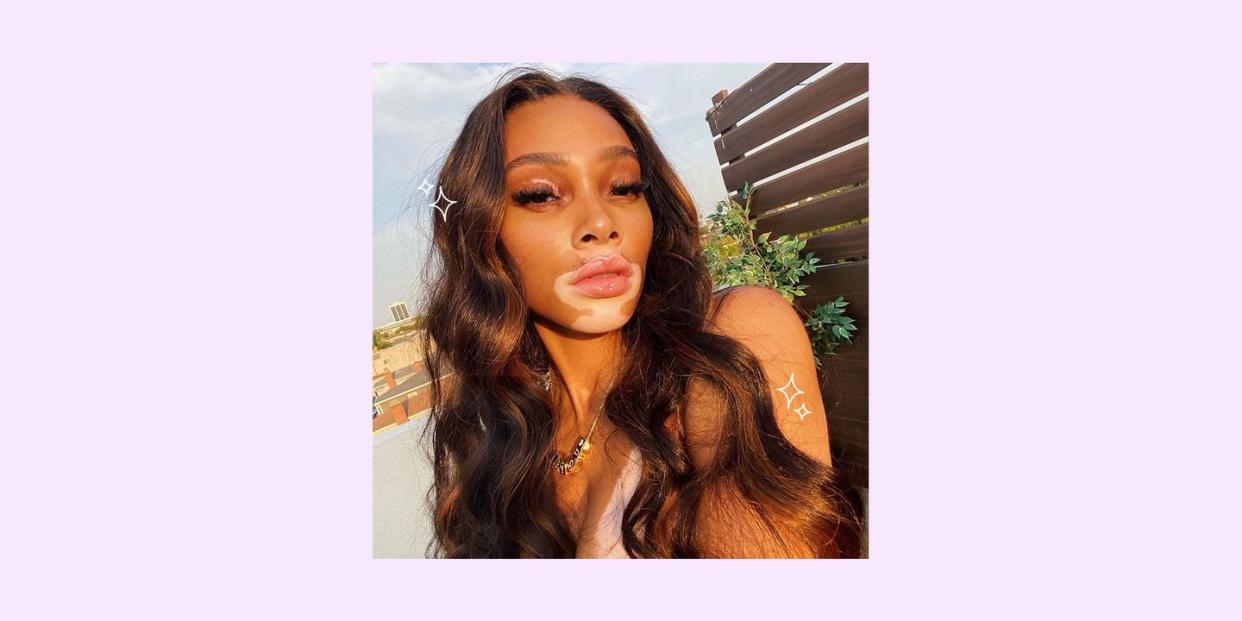Everything You've *Ever* Wanted to Know About Body Wave Hair

Here's the thing: There are so many types of hair extensions in the world that it's a borderline headache to figure out which ones are truly The Best. But as anyone who's scrolled through IG for extension inspo has definitely already noticed, body wave hair remains one of the most sought-after styles. It makes sense, too—body waves are cute, versatile, and basically a year-round staple. And if you've been considering trying them for the first time, you've come to the right place. Ahead, Latoya Boothe, owner of Honey Salon Harlem in New York City, weighs in on everything you need to know about the style, including the installation, maintenance, and so much more.
What is body wave hair?
A post shared by www.vshowhair.com (@vshowhair7) on Sep 22, 2020 at 8:02am PDT
You probably guessed it from the name, but Boothe says body wave hair is defined by its soft, loose curl pattern. The beauty of body wave extensions, says Boothe, is how easy and versatile they are. And while body waves are especially great for anyone wanting an easy, everyday look with minimal styling time—that doesn't mean you don't have the option to style it whenever you want to. If your body wave hair is made of human hair (i.e., 100 percent REMY human hair, not synthetic), Boothe says you can easily blow it out for a sleeker, straighter look or run a curling wand through it for a tighter, more defined style.
"Even if your hair isn't 'done,' you'll still have some nice shape and wave in your hair—and whether you wash it, curl it, or do anything to it, body wave hair still keeps its form," says Boothe. Body wave hair—like all hair extensions—come in a variety of forms, including clip-ins and sew-ins, and can be made with synthetic hair (which is more affordable, but can't be heat-styled) or human hair (which is pricier, but more natural looking and resistant to damage).
How do you install body wave hair?
A post shared by Super Sale Now (@supernovahairstore) on Sep 1, 2020 at 8:59am PDT
Welp, that's totally up to you and your preferences. Boothe says clip-ins are great for anyone in need of a temporary style (think: weddings, birthdays, special events), and since they're re-usable, you can hang on to them and wear 'em whenever you like. But clients in need of something more permanent should consider getting sew-in body wave extensions, says Boothe, which can last up to eight weeks.
With sew-ins, your stylist first braids your natural hair into cornrows and then attaches the extensions onto your braids with a needle and thread—the process definitely takes longer than clip-in extensions (think: three to six hours) but the result is usually super natural-looking. Another plus with sew-ins? They're a protective style, which means they're great for giving your natural hair a break from heat styling, excessive brushing, and product buildup. At the end of the day though, only you know what body wave extensions are going to be best (and, okay, maaaybe your hairstylist—who's always a good person to consult before you decide anything).
How do you wash body wave hair?
A post shared by Asteria Hair Company (@asteria__hair) on Sep 8, 2020 at 6:59pm PDT
If you're working with clip-in extensions, there's no need to wash your body wave hair regularly (since the hair isn't attached directly to your scalp, there's way less room for oil and buildup). When you feel like your extensions do need a wash, use a tiny dollop of sulfate-free shampoo and conditioner, rinse well, and gently pat dry.
Sew-in body wave hair should be washed every two weeks or so, says Boothe. If you have the time, it's not a bad idea to head back to your salon for a professional wash, but if you'd rather do it at home, you'll need a super-gentle sulfate-free shampoo and conditioner. BTW: Boothe says the most important thing is to make sure your body wave hair completely dries. She suggests using a blow dryer on your scalp, since leaving any damp spots can actually lead to irritation and mildew (yes, really—you could start growing mold).
The final word
If you're looking for a cute hair-extension style with loads of versatility, you can't really go wrong with body wave hair. Start by figuring out what type of extensions you want (remember: clip-in or sew-in) and then book an appointment with a pro who can walk you through your best options for installation, maintenance, and more. And, hey, who knows—maybe you'll roll into 2021 with a brand-new look.
You Might Also Like

